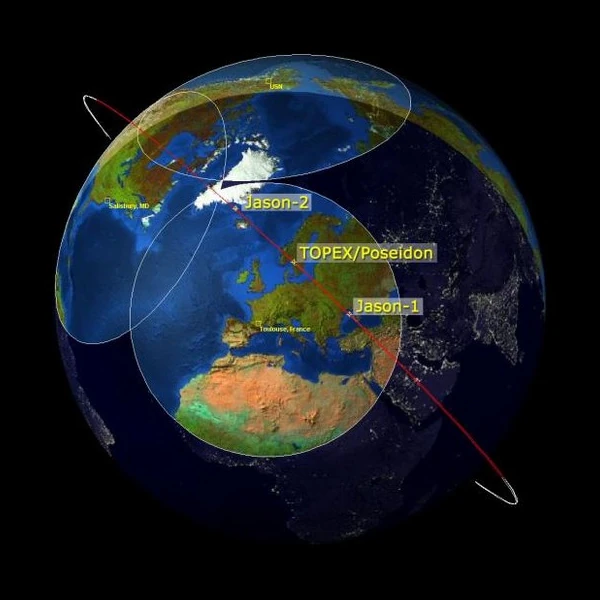
Rising sea levels are one of the most tangible consequences of global warming. Since the beginning of the 20th century, the global mean sea level has risen measurably, and this rise has accelerated over the past few decades. What do recent scientific data tell us about the crucial question: how fast are sea levels rising?
Tide gauges, instruments that measure sea level from the coast, provide data dating back to the 18th century in some regions. Analysis of these records reveals that the global mean sea level rose by about 1.5 mm per year between 1900 and 2000. However, this average rate hides a significant acceleration over the century.
Since 1993, altimetry satellites (TOPEX/Poseidon, Jason-1, Jason-2, Jason-3, and Sentinel-6) have enabled precise and global measurements. These data show an average rise of 3.4 mm per year over the period 1993-2023, more than double the average rate of the previous century.
The rise in sea levels is mainly due to two physical phenomena linked to global warming:
IPCC (Intergovernmental Panel on Climate Change) projections indicate that future rises will depend closely on our greenhouse gas emissions. According to scenarios:
Beyond 2100, the rise will continue for several centuries, even if emissions are stabilized, due to the inertia of the climate system.
It is important to note that the rise is not uniform across the globe. Some regions experience a rise above the global average, while others record a lower rise, or even a relative drop. These variations are explained by:
| Period | Rise rate (mm/year) | Cumulative rise (cm) | Uncertainty | Main method | Scenario |
|---|---|---|---|---|---|
| 1901-1990 | 1.5 | ~13.5 | ± 0.2 | Tide gauges | Observed data |
| 1993-2023 | 3.4 | ~10.2 | ± 0.4 | Satellite altimetry | Observed data |
| 2006-2018 | 3.7 | ~4.8 | ± 0.5 | Altimetry + tide gauges + Argo floats | Observed data |
| Projection 2030 | 4.5-5.5 | +4-6 (vs 2020) | Average | Climate models | RCP4.5 |
| Projection 2050 | 5.0-8.0 | +15-25 (vs 2020) | Moderate to high | Climate models | RCP4.5 - RCP8.5 |
| Projection 2080 | 6.0-12.0 | +35-60 (vs 2020) | High | Climate models | RCP4.5 - RCP8.5 |
| Projection 2100 (RCP8.5 scenario) | 8-16 | +60-110 (vs 2020) | Very high | Climate models | RCP8.5 |
Source: IPCC, 6th Assessment Report (2023), NASA Sea Level Change and Nature Climate Change (2021).
Scientific data converge to confirm that sea levels are rising at an accelerating rate, directly linked to human activities and global warming. The current rate of about 3.4 mm per year could increase significantly during the 21st century, with major consequences for coastal populations and ecosystems.